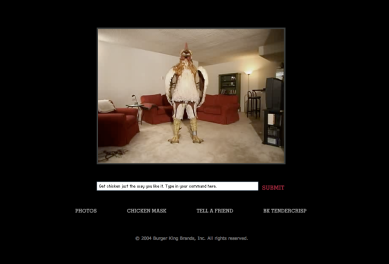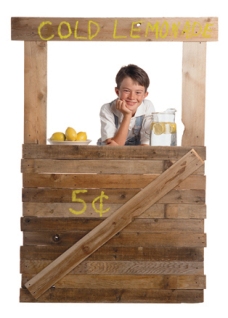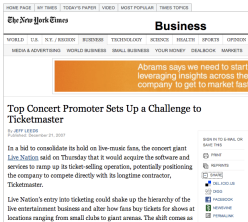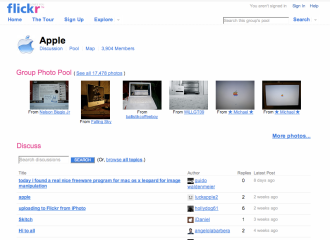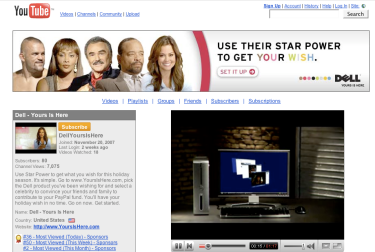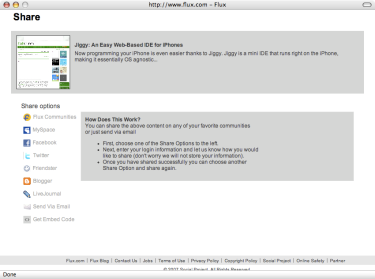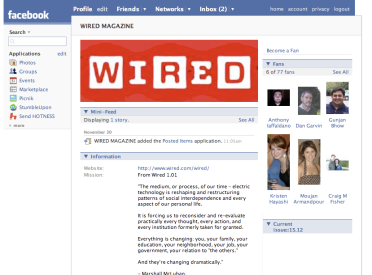
This post is part 2 of The Interactive Media Mix Series. In the series we plan to go over the basics on each of the tools that marketers can use in interactive campaigns, such as microsites, banner ads, streaming audio, online video, mobile marketing, podcasts, email marketing, search engine marketing and social media.
Dear Interactive Marketers,
When banner ads (AKA display ads) were first introduced, they were hailed as one of the greatest advances in advertising, because unlike billboards or TV ads, they could interact with the audience AND their effectiveness could be measured by way of click-throughs with a great degree of accuracy. But then, the advent of flash animation created an unfortunate side effect: “hit the monkey”, “shoot the spaceship”, “trap the mouse”, and “the dancing baby” banners became too annoying and ubiquitous to be effective at all. And so, the banner ad fell from grace.
It finally appears that the age of the dancing baby is over. Today, studies are showing that various campaigns become more effective when display ads are added to the mix and new design technologies like rich media and video are allowing banner ads to become increasingly more interesting and useful
Lets hear from the experts:
- Tessa Wegert, from ClickZ says that banner ads allow marketers to visually imprint their image on the minds of consumers in a way other forms of online media don’t.
- Jason Fittipaldi, from iMedia thinks that expandable banners—which use a new technology that allows the banner to expand when the user rolls over them—are fresh, exciting, compelling, highly interactive and rewarding to the viewer, and they provide an effective foundation for viral marketing and brand extension.
- Lydia Estrada, also from iMedia, claims that the interactive space provides the capability to reach consumers on multiple levels (rational, emotional) and it is important to take advantage of that as often as possible.
- And finally, examples cited in both Media Post Publications, by David L. Smith, and in BusinessWeek, by David C. Churbuck, show that banner ads used in conjunction with other channels increase the overall effectiveness of the campaign.
So What?
Banner ads have made a comeback and have become the centerpiece of the interactive media mix. Used wisely, they can be helpful and entertaining for your customers and an entryway into your company or brand’s web presence.
Interested?
Internet Advertising Bureau UK – Display Ads
DoubleClick – Best Practices for Optimizing Web Advertising Effectiveness, May 2006 (Available for download)
BizReport – Europeans Click with Video Ads, Kristina Knight, May 2007
BizReport – Large Ad Formats Popular with European Marketers, Helen Leggat, May 2007
Media Post Publications – TV and Web, Working Together, David L. Smith, Aug. 2007
BusinessWeek – Google and the Rebirth of Banner Ads, David C. Churbuck, April 2007
ClickZ – Do you buy Banners? Tessa Wegert, Nov. 2006
ClickZ – Interactivity with a Mission, Tessa Wegert, July 2006
iMedia – The Seven Principles of Effective Online Ads, Lydia Estrada, Sept. 2005
iMedia – Three Ways to Improve Banner Ads, Jamie Roche, Nov. 2006
iMedia – 5 Targeting Success Stories, Robert Moskowitz, Oct. 2006
ClickZ – Making Video Advertising Accountable to Consumers, Jeremy Lockhorn, Sept. 2006
iMedia – Extreme Makeover: Banner ads Redux, Jayson Fittipaldi, April 2007
BusinessWeek – Levi’s Fits its Ads to the Web, Steve Rosenbush Oct. 2006
iMedia – How better display ad targeting is changing internet advertising, Tim Brown, Aug. 2007
Marketwire – Marketers can Buy Blog “Buzz”, Nielsen Reports, July 2007
Yukonbiz (blog), Do banner ads still work? Geoff Harries, Oct. 2006
GigaOM (blog), Why Google bought DoubleClick, Om Malik, April 2007
ClickZ – Mobile advertising goes graphic, Rebecca Lieb, Jan. 2007
WJS.com – Brand Marketers Return to the Web, David Kesmodel, May 2006
And here are a couple of examples of great video banners
The Google/Saturn banner video
A “Get a Mac” campaign banner
(knife image: ©iStockphoto.com/s_white, Levi’s banner ad courtesy of Avenue A | Razorfish. See all of them here.)





